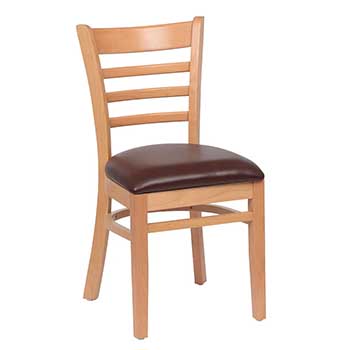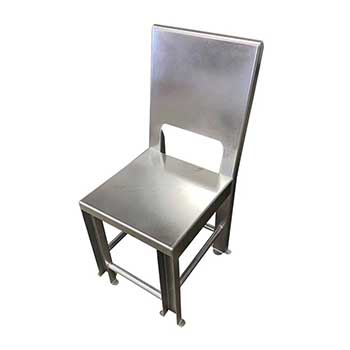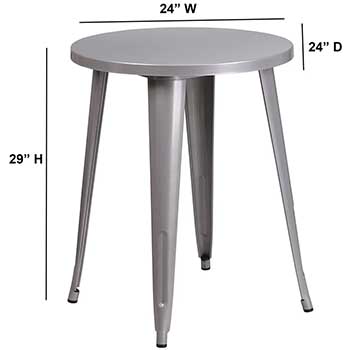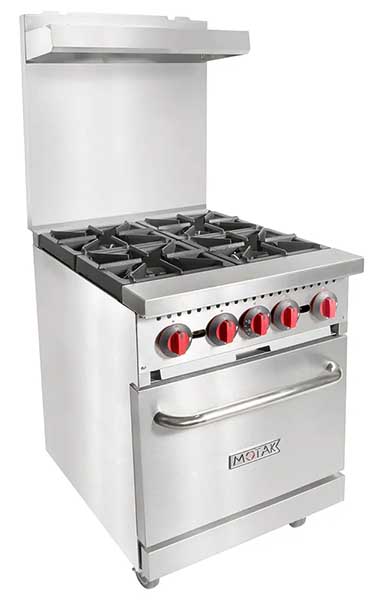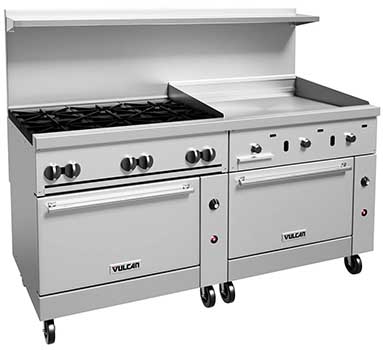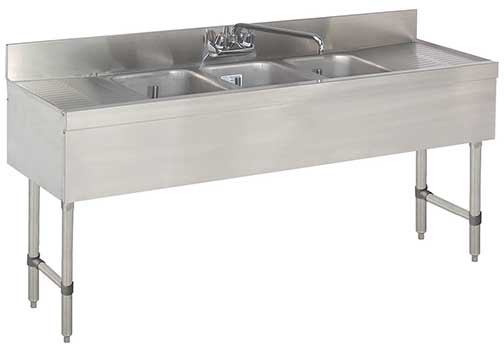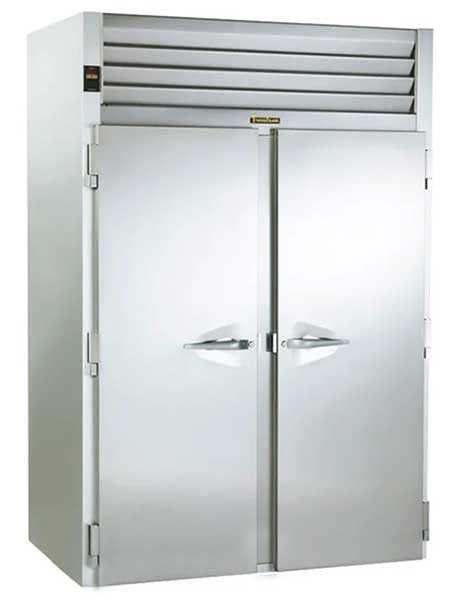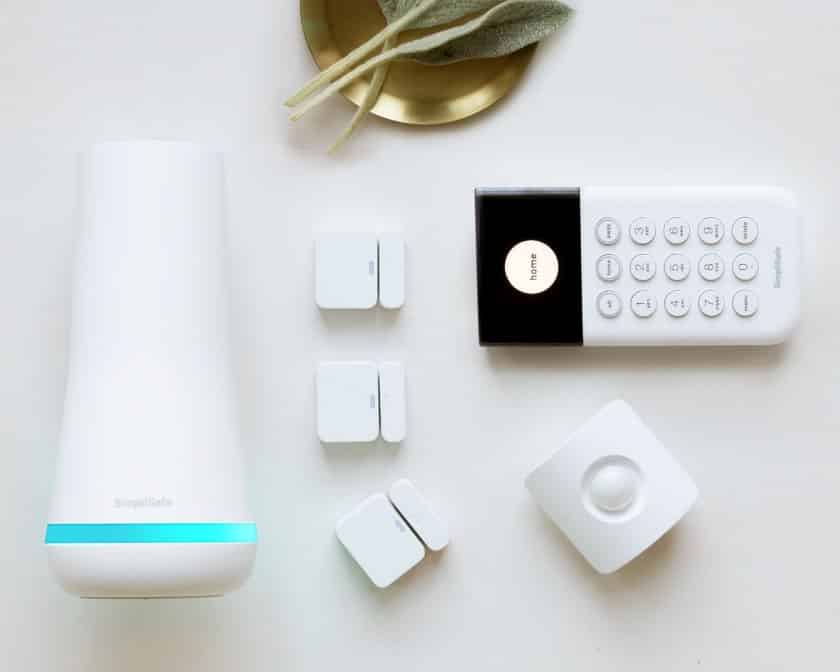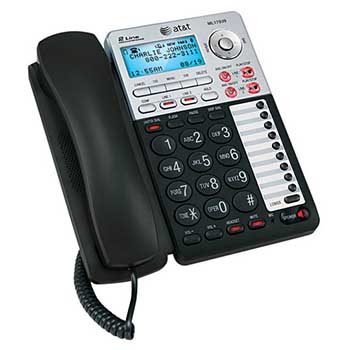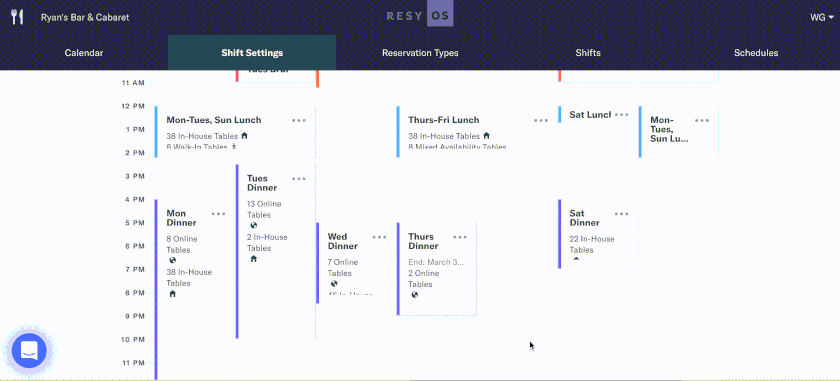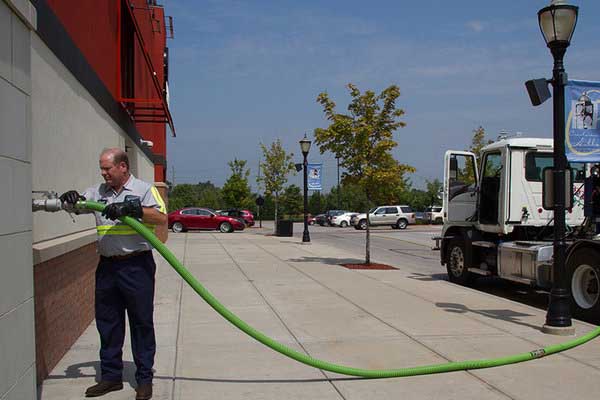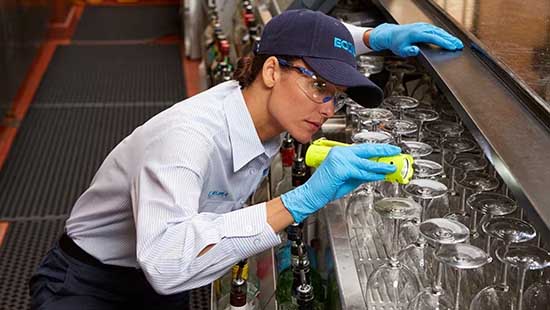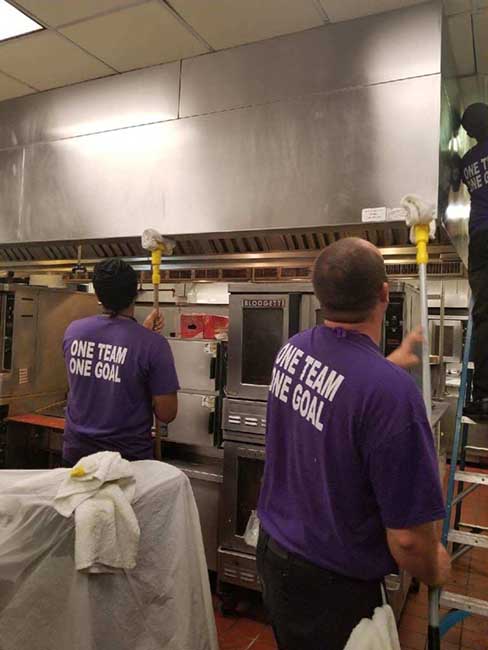Most small restaurants spend around $275,000 to open, although costs vary by restaurant type and can range significantly.
How Much Does It Cost to Open a Restaurant?
Startup costs for a new restaurant typically range from $95,000 to over $2 million. The actual amount it costs to open a restaurant depends on factors like your lease agreement, required permits, and renovation goals. Typical expenses include one-time purchases, like furniture and equipment, alongside ongoing costs, like rent and utility bills. Most small restaurants spend around $275,000 to open.
The figures below can help you ballpark your restaurant opening costs. We calculated these estimates from data compiled by organizations like the National Restaurant Association alongside price comparisons from restaurant suppliers and service providers.
Typical Restaurant Startup Costs
Category | Average Cost | What It Involves |
|---|---|---|
Business Incorporation | $285 - $3,400 |
|
Commercial Space* | $3,000 - $10,000+ per month; 1% - 10% revenue share |
|
Renovations | $100 - $800 per square foot |
|
Furniture, Fixtures, and Equipment (FF&E) | $15,000 - $80,000+ |
|
Restaurant Technology | $3,000 - $10,00 upfront; $0 - $1,000 per month |
|
Permits & Licenses | $700 - $15,000+ |
|
Insurance | $2,000 - $8,000 upfront; 3% - 7% of gross payroll |
|
Sanitation | $465 - $6,600 |
|
Staffing Costs | $1,200 per employee; 8% of wages for payroll tax |
|
Starting Inventory | $5,000 - $35,000+ |
|
Capital & Contingency | $9,000 - $100,000 |
|
Marketing | $350 - $20,000+ |
|
*This figure reflects a restaurant lease, since that is the most common. Read our guide to buying a restaurant for accurate figures of how much it costs to purchase a restaurant space.
Now that you have a general idea of the costs of opening a restaurant, let’s take a deeper look at each type of restaurant startup cost. We’ve listed the costs in a rough chronological order that matches when in the restaurant opening process you’re likely to encounter them.
Incorporating Your Business
- Business Registration: $25 – $2,000 (one-time)
- Doing Business As (DBA): $25 – $100 (one-time)
- Registered Agent (optional): $100 – $300 per year
- Business attorney (optional): $135 – $1,000 per hour
One of the first things you will need to do is file documents with your state to establish your business entity. The primary cost of incorporation documents will be your state’s filing fee. These fees range from $25 to $2,000, depending on your state.
There are several documents involved in registering your business. The requirements vary by state, but you can typically expect to prepare an article of incorporation (containing basic business information like name, location, and names of owners and agents) and an operating agreement (a description of how the company will function). Most restaurants also need to file a Doing Business As (DBA) document (you’re not likely to give your business your personal name).
You may also opt to list a service to act as your business’s registered agent (RA), which is simply the person who is designated to represent your business in legal matters if you would prefer not to do it yourself. This would mostly come into play if you are opening a restaurant in a state where you are not a resident. These services typically only pass on your state filing fees; they currently don’t charge a markup.
Many startup restaurants use a business attorney to perform these steps. This makes the most sense if you are new to the restaurant industry, your planned restaurant business is complex, and need an attorney to perform other services, like drafting investor’s agreements or negotiating your lease. Alternatively, you can use a legal services site like IncFile or Rocket Lawyer to help keep you organized.
Most legal services companies don’t charge an additional markup above the cost of your state’s registration fees. If you are considering using a legal services provider, see our ranking of the best online legal services for options.
How to save: File basic documents yourself via a legal services website.
When to splurge: If this is your first business, spend the money to hire a business attorney to avoid missteps.
Commercial Space & Utilities
- Lease costs: $3,000 – $7,000 per month
- Revenue sharing (common): 1% – 10% of total sales
A favorable restaurant lease is one of the most critical aspects of running your restaurant profitably. Your monthly lease costs will range from $3,000 to $7,000 per month for small to midsize restaurants. The price varies mostly depending on your location and the availability of commercial restaurant spaces; the fewer spaces available, the higher the rent is likely to be.
Many restaurant leases also request a revenue share—a percentage of your sales—as part of your lease agreement. This usually costs from 1% to 6% of sales—though in some competitive markets, it can go as high as 10%—and is paid once a month. If your landlord is requesting a percentage of sales, you should absolutely retain an attorney to negotiate the most favorable terms for you. Considering that restaurant leases can run 10 to 20 years, you’ll be saving thousands of dollars in the long run.
How to save: The best way to get favorable lease terms is to hire an attorney to negotiate the lease for you; this one-time expense will ensure long-lasting savings.
When to splurge: Location has an enormous impact on your profitability; spring for the highest traffic location you can afford, with the best parking available.
Utilities
- Electricity: $2,000 – $6,000 per month
- Water: $1,000 – $3,000 per month
- Gas: $1,700 – $4,000 per month
- Internet: $69 – $300
Restaurants also need to consider the cost of utilities. Your utilities like electricity, water, gas, and internet will be an upfront cost before you open. You need lights, water, electricity, and internet to test recipes, train staff, and pass your health and safety inspections.
Utilities are also an ongoing cost. Your ongoing costs for electricity, gas, and water will vary widely based on your restaurant size, traffic volume, and the fuel you use for cooking.
How to save: Get energy-star-rated appliances and consider electric or induction ranges, which are less prone to the massive price fluctuations of gas systems.
When to splurge: If you have a large space, you’ll need to get the strongest internet available to keep your POS system online. And if your menu consists of foods that require an open flame (like Wok-based dishes), you’ll need to budget for gas as your cooking fuel.
Renovations
- Renovation costs: $100 to $800 per square foot
Construction and renovation costs for a new restaurant are optional and can vary a lot. Your costs will depend on your building’s square footage, the quality of materials you desire, and the type of construction performed. Your costs will also vary based on the cost of building permits in your area (and whether the type of work you want requires them).
Frequently, these costs are referred to collectively as “build-out” costs. Restaurant build-out costs typically range from $100 to $800 per square foot. Your build-out may involve adding floor drains and electrical outlets for appliances, bringing restrooms up to Americans with Disabilities Act (ADA) standards, or installing a full commercial kitchen with fire suppression equipment.
How to save: The best way to save money on restaurant construction is to lease a space that has previously been a restaurant.
When to splurge: If you are moving your restaurant into a raw commercial space, or need to install specialty equipment like a wood-burning pizza oven, plan for a large budget here.
Furniture, Fixtures, and Equipment (FF&E)
- Tables: $250 – $1,000 each
- Chairs: $50 – $500 each
- Servingware, glassware, cutlery: $3,000 – $20,000 (overall)
- Other front-of-house fixtures (lighting, counters, etc.): $3,000 – $20,000
- Kitchen equipment: $500 – $10,000 each
- Office furnishings: $300 – $1000 (overall)
Restaurants need a lot of different equipment and furnishings. Furniture, Fixtures, and Equipment (FF&E) includes all the furnishings that are not permanently installed into the building’s structure. To get an accurate idea of your full FF&E costs, consider each area of the restaurant separately.
The areas that are open to customers—or the front of house (FOH)—need tables and chairs for customers, along with lighting, menu displays, and service counters.
Restaurant-grade tables can cost from a couple hundred to more than $1,000 each, and chairs typically range from $50 to $500—with most falling in the $200 range. This is a category where you really get what you pay for; if you opt for less expensive tables and chairs, you’ll definitely be replacing them more frequently. You can see a quick comparison of chair and table options in the slides below.
Your kitchen needs ranges, fryers, refrigerators, and dishwashers. These pieces of equipment can range from $500 to more than $10,000 apiece. Depending on your service style, you may also need specialized equipment, like a grill or a wood-burning oven. Health code will also require you to have a three-compartment sink for ware-washing and sanitizing.
Holding hot food at safe serving temperatures requires heat lamps and steam tables. You’ll also need storage racks in every available space—your front of house, back of house, storage areas, and office. A restaurant can never have enough storage.
You can lease or buy most FF&E. Most restaurant accountants encourage you to buy large items like dishwashers and refrigerators since—like any long-term assets—large FF&E items depreciate over time, which adds to your annual tax write-offs. Learn more about asset depreciation in our Depreciation: How it Works + Examples article.
How to save: Leasing a space that already has the kitchen and beverage equipment you need will definitely save you money. You can also buy some expensive equipment used.
When to splurge: If you anticipate doing a high volume of business, it’s best to spend top dollar on FOH fixtures to reduce replacement costs. The same goes for a high-volume kitchen—new equipment will be less prone to breaking.
Restaurant Technology
- POS System: $400 – $10,000 upfront; $0 – $300 per month
- Security system: $200 – $599+ for hardware; $10 – $80 per month for service
- Phone system: $500 – $2,500 upfront; $90 – $300+ per month
- Reservation/ waitlist system: $0 – $300 per month
- Misc. Other Software (inventory, scheduling, etc.): $0 – $300 per month per product
Restaurant technology has expanded rapidly in recent years, spurred by changing customer demand for contactless payments and the pressures of restaurant understaffing. The market is also incredibly competitive right now, which is good news for restaurant owners.
Most restaurant software—including restaurant point of sale (POS) systems—offer free trials or free subscriptions. And many types of restaurant software, from POS systems to reservation and inventory management apps, run on iPads or smartphones. So, you might only have to pay the cost of a few iPads, card readers, and receipt printers to get started.
Click through the tabs below for some other restaurant technology you’ll want to consider:
How to save: Budget-conscious restaurants can find free to low-cost restaurant software that can perform most tasks on an iPad. See our guide to the best free POS software for some examples.
When to splurge: If you have a large staff or are a high-volume concept, you should invest in industry-grade hardware. If you are in a high-traffic location, a professionally installed, monitored security system is also a wise investment.
Permits and Licenses
- Basic business permits: $200 – $5,000+
- Health and safety permits: $500 – $10,000+
Every restaurant needs some essential business permits and insurance policies. Many of these permits, licenses, and insurance policies are required by state or federal law. The list above gives a general picture of some ballpark expenses. Read through the sections below for a more detailed cost breakdown.
Depending on the size of your restaurant operation, you need to secure dozens of permits and licenses, from foodservice licenses to federal and state employer ID numbers, and even to building permits.
Some licenses require inspections, and some will need to be renewed annually or bi-annually. Besides that, certain permits are only issued to a licensed contractor (like building permits for a renovation), while you will be on your own to secure others.
These are some typical restaurant permits you may need:
If you have specialized equipment like a wood-burning pizza oven, you’ll need a special permit from the fire department. Many locations also require permits for having pool tables, live music, or selling tobacco products. Check your local laws for additional permits you may need based on your service style.
How to save: Start small, without additional revenue streams that require additional permits, like a liquor license. You can expand your operation (and obtain the costlier permits) after you have been open and have profits coming in.
When to splurge: If you don’t have the administrative time to chase down all the permits you need, hire a permit facilitator. Facilitators are typically former local permit inspectors, and they are familiar with city and county offices that issue permits.
Insurance
- State and Federal Unemployment Insurance: 3% – 7% of gross payroll, per pay period
- Workers’ Compensation Insurance: around $2.00 per $100 in annual payroll
- Business Liability: $500 – $5,000
- Commercial Automotive (optional): $1,800 – $2,400
- Employee Health Insurance: Varies
The risk of damage, injury, and loss can be higher in restaurants than many other businesses. Besides the protection that you’re required to purchase by law (like liability and workers’ compensation), you will need to look into different kinds of coverage based on your restaurant style.
For example, a restaurant that does a lot of delivery business needs commercial automotive insurance. Restaurants with bars need liquor liability included in their policy. Depending on your business size, you may also be required to provide health insurance to your full-time employees.
You can learn more about insurance types and costs by exploring our article, Small Business Insurance: Costs, Coverage & Industries.
How to save: See our guides to the best workers’ compensation companies and the cheapest general liability insurance companies to find the best rates.
When to splurge: If you have a fleet of delivery drivers, get the most comprehensive commercial automotive coverage you can find. Better yet, invest in a delivery vehicle, too.
Sanitation
- Garbage removal: $250 – $500 per month
- Grease removal: $115 – $1,200 per pump (usually every 28 days)
- Pest Control: $100 – $200 per visit (typically every two weeks)
- Commercial Cleaners (optional; recommended): $50 to $150 per hour
If your restaurant is in a strip mall or shared commercial building, your lease may include garbage removal (and sometimes recycling) services. If you are based in a standalone location, however, you’ll need to retain these services yourself. The size of the dumpster you require will vary based on your customer volume. Prices vary based on your location, number of pickup days per week, and dumpster size.
The table below shows sanitation industry recommendations for dumpster size based on your customer volume and the prices shown are based on a once-weekly pickup.
Recommended Dumpster Size by Customer Volume | ||
|---|---|---|
Daily Customer Volume | Dumpster Size | Average Monthly Cost |
1 - 100 | 2 yards | $250 - $300 |
101 - 200 | 3 yards | $300 - $350 |
201 - 300 | 4 yards | $350 - $400 |
301 - 600 | 6 yards | $400 - $450 |
600+ | 8 yards | $400 - $500 |
In most places, there are no specific laws about what size dumpster your restaurant must have. But if your dumpster is too small for your business, you could be fined by your landlord, property management company, or the city for creating a hazard. Pests are also attracted to overflowing dumpsters, which could eventually lower your health department grade.
Grease removal, pest control, and cleaning are also costs of keeping your restaurant sanitary. Click through the tabs below to learn more about these costs.
How to save: Find a location that includes some sanitation services in your lease. Have your staff handle some cleaning tasks daily to reduce your need for extensive pest control and cleaning services.
When to splurge: If you do not have the staff to handle daily cleaning tasks or the restaurant is large, turn over cleaning to the professionals.
Staffing Costs
- Posting on job sites: $0 – $100 per listing
- Starting salaries: Varies
- Training wages: around $1,200 per person
- Payroll tax: around 8% of staff wages and salaries
You’ll need staff to cook and serve your food. So your first employee-related expense will be the cost of posting available positions on job sites.
A startup restaurant will also have the additional expense of paying those staff members for a week or two for training and recipe testing before opening. As such, you’ll need to budget for those funds before you have any sales to offset them. If you have salaried employees, like an executive chef or managers, you’ll likely onboard them even earlier—possibly months before your opening. And you’ll also need to budget for your portion of payroll taxes on these wages.
How to save: Ask your suppliers for any training materials on products or software. Everyone, from your coffee roaster to your POS company and liquor supplier, will have some free training materials to share.
When to splurge: If your menu or cocktail program is complicated, bring your staff in for extra training time.
Starting Inventory
- Food: $2,000 – $20,000+
- Nonalcoholic beverages: $500 – $1,500
- Beer, wine, and spirits: $2,000 – $8,000+
- To-go containers: $100 – $500
- Paper supplies: $100 – $500
- Cleaning supplies: $200 – $500
Before you officially open, you will need to purchase the food and beverages you plan to sell to customers. The amount you spend on opening inventory will depend on your expected customer traffic, the type of food you serve, the amount of storage space you have, and your ability to negotiate competitive prices.
You’ll need to open accounts with food and beverage suppliers to place your first orders. As a new restaurant without a payment history, most vendors will request that you pay for your full order in advance or with a check as soon as the order is delivered.
Supplies also include paper products like napkins and takeout containers. And don’t forget cleaning supplies like paper towels, hand soap, and ware-sanitizing solution; these are requirements to pass a health inspection in most places.
How to save: Show your menu to your suppliers and ask for their product recommendations. They can guide you to the least expensive options that will work for you.
When to splurge: If you are serving a picky clientele or have your eye on awards, you’ll have to spend some coin on top-of-the-line ingredients.
Capital and Contingency
As a new restaurant, you will have additional expenses in your early months. Until you have a sense of what your busy times are, you may over-schedule your staff. Until you see what menu items are most popular, you may over-order on supplies. You’ll need to reserve some capital to cover your initial operating costs until your restaurant begins to earn a profit.
To be on the safe side, you should set aside six months’ worth of operating expenses and reserve 10% of your total revenue for contingency. That way, your restaurant can stay solvent until it starts generating significant cash flow. As with most of the costs of starting a restaurant, how much you need for capital and contingency will vary.
The table below gives you a ballpark idea of the recommended contingency amounts for different restaurant types.
Contingency Estimates by Restaurant Type | |
|---|---|
Food Truck | $9,300 - $22,800 |
Quick Service Pizzeria | $15,000 - $40,000 |
Full Service Casual | $25,000 - $100,000 |
Where to save: This is not the place to skimp; if you need to reduce costs, do it in a different category.
When to splurge: Save as much money as you can for capital and contingency. It will help you keep the lights on in the lean times.
Marketing
- Website build: $50 – $20,000
- Website hosting: $1 – $27 per month
- Domain Name: $9 – $20 per year
- Press Release Distribution: $99 – $400+
- Social Media Advertising: $200 – $2,000
Ensure that when you reach the home stretch, you have funds available to let your community know about your new restaurant. You can spend as little or as much as you want on marketing your new restaurant. Purchasing targeted ads on social media platforms like Facebook and Instagram is a popular, low-cost way to announce your opening.
Placing ads in local papers or writing a press release and distributing it to local news outlets is another excellent option. This generally costs more, but it is worth it if you can afford it.
How to save: Do your own marketing on social media. See our guide to social media marketing for ideas.
When to splurge: If you are in a busy market and need to break through the static of other business openings, hire a publicist to drum up some buzz from industry and local publications.
Optional Costs
In addition to the costs mentioned above, there are other services you may opt to use to get your restaurant open. These services can add to your restaurant opening costs, but if you have a complex concept or are operating in a major metropolitan area like New York City, Chicago, or Los Angeles, the extra expense can save you a lot of headaches.
- Small Business Attorney: $150 – $1,000 per hour
- Restaurant Consultant: $250 – $1,000 per day
- Permit Expediter: $25 – $70 per hour
- Architect: $40,000 – $200,000+
- Interior Designer: $25,000 – $200,000+
- Publicist/ PR: $1,000 – $10,000 per month
There are a slew of specialized professionals who can take restaurant opening tasks off of your hands, for a fee. The main difference between a $250,000 restaurant opening and a $2 million dollar opening is the cost of these professional services.
Using an architect, a restaurant consultant, and an attorney can add over $200,000 to your startup costs right away. But if you have the budget for them, these professional services can speed your buildout, build press buzz, and ensure you get the most favorable terms on every contract.
How to save: If you only get the support of one professional, make it a business attorney. They can ensure you don’t sign any unfavorable contracts, which will have a long-lasting impact.
When to splurge: If you are new to the restaurant industry and have the budget, get as much help as you can afford.
- Initiation Fee: $20,000 – $200,000
- Franchise fee: 5% – 50% of monthly sales
Some new restaurant owners opt to buy into an existing restaurant franchise rather than build their business completely from scratch. Franchise owners pay fees to a restaurant franchise company for the right to use the name, business model, and products of that company. McDonald’s, for instance, is probably the most recognizable restaurant franchise in the US.
If you choose to start a franchise restaurant, you will need to budget for two kinds of fees; the initiation fee and ongoing franchise fees. Both of these fees vary from franchise to franchise. Initiation fees are one-time payments that generally range from $20,000 – $200,000. The higher profile the brand, the higher the initiation fees will be.
After your restaurant opens, you will also pay the franchisor a percentage of gross revenue in a monthly franchise fee. This percentage can be anywhere from 5% to 50%, depending on the concept.
How to save: Start small with a regional coffee shop or sandwich shop chain. These tend to be less expensive franchises to get started.
When to splurge: If you are a novice restaurant owner, franchising can give you the boost of brand recognition while also providing you with detailed training materials. Spring for the most recognizable brand you can afford.
Restaurant Startup Costs Frequently Asked Questions (FAQs)
A well-managed restaurant can be profitable. The key is reducing costs wherever possible while also growing sales. Profitable restaurants typically operate with a profit margin of 5% to 10% of their top-line sales. Meaning that after all their costs and expenses, only 5% to 10% of their overall sales flows through to their bottom line. So a profitable restaurant that sells $1 million annually could see an annual profit of $50,000 to $100,000.
Labor and cost of goods sold (COGS) are the two biggest restaurant expenses. But both of these costs are controllable; you can order less expensive ingredients, reduce your menu, and even reduce staffing levels. The costs you cannot control—like rent or utilities—are the costs that can be the most challenging to manage. Restaurants rarely close due to overpaying on labor and supplies. But unfavorable lease terms lead to restaurant closures every day.
Labor and supplies will be the biggest line items on your profit and loss (P&L) statement. But if you’re concerned about how costs might impact your restaurant’s longevity, look at your rent.
The amount of money that a small restaurant earns will vary greatly by the restaurant type, location, and day of the week (nearly all restaurants see brisker sales on weekends versus weekdays). But small restaurants typically see about 50 customers per day, and with an average customer check of $10 to $20, can expect to sell $500 to $1000 daily. That’s not necessarily what the restaurant “earns,” though. Only about 5% of that is pure profit. Small restaurants can expect to see $50 to $200 of profit per day flow through to their bottom line.
On a daily basis, restaurants spend money on food, labor, rent, utilities, and insurance. These are your standard restaurant operating costs. You’ll likely also spend time and money on marketing and advertising, cleaning supplies and services, and equipment maintenance.
Bottom Line
How much it will cost you to open a new restaurant depends on your restaurant style and location. Whether you are moving into a raw commercial space or one that has previously been a restaurant will determine your construction and renovation costs. Whatever your restaurant’s style or location, you should set aside three to six months’ worth of operating expenses to ensure you have enough cash flow in the early days. You’ll need between $95,000 and $2 million to start a restaurant; most new restaurants spend around $275,000 to get open.
